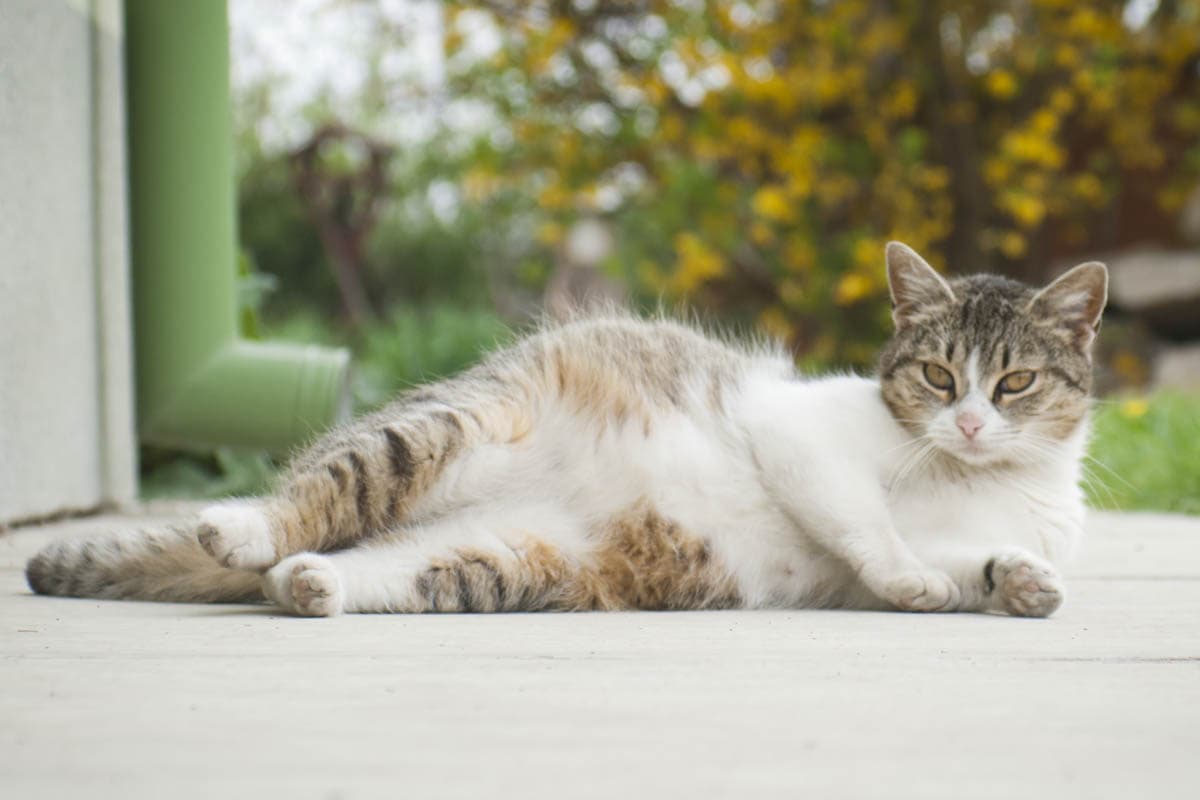About
All cats should be on a regular worming schedule regardless of whether they are indoors only, indoor/outdoor, pregnant or lactating. Female cats can pass on common parasitic worms to their kittens both in-utero and through the milk during nursing which means it essential to ensure a regular worming regime is carried out both during pregnancy and lactation.
Common parasitic worms include tapeworm, roundworm, hookworm and heartworm.
Tapeworm
Tapeworms are transmitted via the bite of a flea carrying the infective tapeworm larvae. The infected flea is ingested when the cat grooms, and once inside the stomach, is broken down releasing the tapeworm larvae.
Roundworms
Transmission of roundworm occurs in several ways; this parasitic worm is very sneaky. Once ingested, most larval heartworms make their way to the small intestine. However, a small number may migrate to other tissues where they encyst and remain dormant. During pregnancy, these encysted roundworm larvae migrate to the mammary glands where they pass into kittens via the mother’s milk. Puppies can become infected with encysted roundworm larvae which can cross the placental barrier, but there is mixed opinion if this is possible in cats. I always think it is better to assume the worst, that it is possible and treat accordingly.
Hookworms
Transmission or hookworms occurs when the cat comes into contact with infective larvae in the environment which can penetrate the skin and migrate to the small intestine. Infection can also occur via direct ingestion.
Canine hookworms can infect kittens by crossing the placenta during pregnancy as well as encysted worms which migrate to the mammary glands during pregnancy. It is not known if these two modes of infection can occur in cats.
Signs of worms in cats
Sometimes you may see evidence of a worm infestation such as spaghetti-like worms in the vomit of cats infected with roundworm. Rice like segments around the anus and in the stool, or sesame seed-like eggs around areas your cat sleeps if your cat has a tapeworm. Symptoms of worms can include:
- Vomiting
- Diarrhea
- Weight loss
- Poor coat condition
- Stunted growth (kittens)
- Pot-bellied appearance
However a lot of the time there are no signs of worms.
An in-house diagnosis can be made by examining a fecal sample for the presence of worm eggs.
Worming schedule for pregnant cats
Ideally, a cat should be on monthly or tri-monthly worming preventative medication, unless your veterinarian has indicated otherwise. If you haven’t been worming your cat and she falls pregnant unexpectedly, you can still worm her, but it is important to be aware that not all worming products are safe for pregnant or lactating animals.
A veterinarian can advise on what products are safe to use on a pregnant cat.
The schedule is as follows:
- During pregnancy – Every 3 weeks
- Nursing kittens – Every 3 weeks (worming should continue until the kittens have weaned)
Kitten worming schedule
As we previously discussed, encysted worm larvae can travel to the mammary glands and through the milk infecting nursing kittens, and it may be possible infection can also occur in-utero, so it is crucial that not only the mother be wormed but also her kittens. Worm kittens at the following intervals:
- 2 weeks
- 4 weeks
- 6 weeks
- 8 weeks
- 12 weeks
- Then every three months or as directed by the manufacturer
Only use products that are labelled safe to use on pregnant and nursing cats as well as kittens. Not all worming products will treat all types of worms.
The only active ingredient safe to use on kittens two weeks of age is Fenbendazole (Panacur or Safeguard).
Cat worming products
Product |
Available as |
Treats |
Safe for |
| Advocate/Advantage Multi (Imidacloprid and Moxidectin) |
Spot on |
Fleas (adult), roundworms, hookworms, lungworm and ear mites. Heartworm preventative. Does not treat tapeworm. | Kittens + 9 weeks old. Safe use on pregnant and lactating females has not been established. |
| Aristopet (Praziquantel and Pyrantel embolate) |
Tablets | Roundworm, hookworm, and tapeworm. | Kittens + 6 weeks old. Safe to use on pregnant and lactating females. |
| Excelpet (Praziquantel and Pyrantel Embolate) |
Tablets | Roundworm, hookworm, and tapeworm. | Kittens + 6 weeks old. Safe to use on pregnant and lactating females. |
| Heartgard (Ivermectin and Pyrantel) |
Chews | Roundworm, hookworm, heartworm preventative. | Kittens + 6 weeks old. Safe to use on pregnant and lactating females. |
| Milbemax (Milbemycin Oxime and Praziquantel) |
Tablets | Roundworm, hookworm, tapeworm. Heartworm preventative. | Kittens + 6 weeks old and over 500 g. Safe to use on pregnant and lactating females. |
| Panacur (Fenbendazole) |
Tablets and paste | Tapeworm (Taenia taeniaeformis species), roundworm, hookworm, whipworm, lungworm, and giardia. Does not treat Dipylidium caninum tapeworm. | Kittens + 2 weeks. Safe to use on pregnant and lactating females. |
| Popantel (Praziquantel) |
Tablets | Roundworm, hookworm, and tapeworm. | Kittens + 6 weeks. Safe to use on pregnant and lactating females. |
| Profender (Praziquantel and Emodepside) |
Spot on | Roundworm, hookworm, tapeworm, and lungworm. | Kittens + 8 weeks. Safe to use on pregnant and lactating females. |
| Purina Total Care (Pyrantel embolate and Niclosamide) |
Paste and tablets | Roundworm, hookworm, and tapeworm. | Kittens + 6 weeks old. Safe to use on pregnant and lactating females. |
| Revolution (Selamectin) |
Spot on | Fleas (adult, larvae and eggs), intestinal worms (except tapeworm), lungworm and ear mites. Heartworm preventative. Does not treat tapeworm. | Kittens + 6 weeks old. Safe to use on pregnant and lactating females. |

